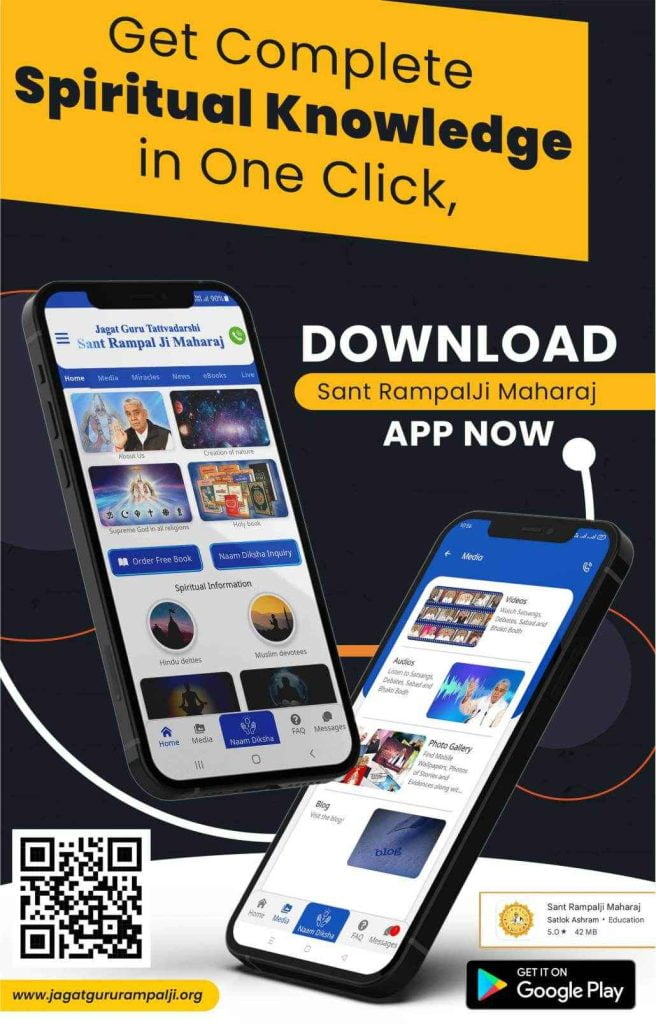Marketing today is different from what it used to be. People see thousands of ads every day, and they quickly ignore ones that don’t interest them. To succeed, businesses need to create effective marketing campaigns that grab attention and make people want to buy their products or services.
- Introduction
- What Are Effective Marketing Campaigns?
- Key Parts of a Successful Campaign
- Setting Clear Goals (SMART Goals)
- Understanding Your Audience
- Creating a Strong Value Proposition
- Choosing the Right Channels
- Creating Compelling Creative Content
- Planning Your Timing
- Best Marketing Campaign Examples from Recent Years
- Dove “Real Beauty Sketches” Campaign
- Spotify “Wrapped” Campaign
- Apple “Shot on iPhone” Campaign
- Nike “Dream Crazy” Campaign
- Old Spice “The Man Your Man Could Smell Like” Campaign
- What Made These Campaigns Successful
- Using Data to Improve Your Campaigns
- Common Mistakes to Avoid
- Not Researching Your Audience
- Creating Weak Call-to-Actions (CTAs)
- Ignoring Mobile Users
- Not Tracking Your Results
- How to Build Your Own Winning Campaign: Step-by-Step Guide
- Step 1: Research and Planning
- Step 2: Creative and Content Development
- Step 3: Channel Selection and Budget Allocation
- Step 4: Testing and Launching
- Step 5: Monitoring and Improving
- The Future of Marketing Campaigns
- AI and Hyper-Personalization
- Privacy-First Advertising
- Micro-Influencer Campaigns
- Voice and Visual Search
- Frequently Asked Questions
- How long should a marketing campaign run?
- What’s the difference between branding and performance campaigns?
- How do you measure marketing campaign ROI (Return on Investment)?
- Conclusion
- Beyond Campaigns: Connecting to a Higher Purpose
This guide will teach you everything you need to know about building marketing campaigns that actually work. We’ll look at real examples from famous companies and give you step-by-step instructions you can follow.
Introduction
In 2025, marketing has become much more challenging than before. People use their phones, computers, tablets, and smart TVs all day long. They switch between different apps and websites constantly. When they see an ad, they decide in just a few seconds whether to pay attention or scroll past it.
The companies that win are the ones that understand how to reach people at the right time with the right message. They use data (information about their customers) to make smart decisions about their marketing campaigns.
Modern customers are also much smarter than before. They research products online, read reviews, and compare prices before buying anything. This means your marketing needs to be helpful and honest, not just flashy.
Successful businesses today create effective marketing campaigns that combine creative storytelling with smart use of technology and data. They test different approaches to see what works best and quickly change their strategy when needed.
What Are Effective Marketing Campaigns?
Simple Definition: An effective marketing campaign is a planned series of advertisements and activities that helps a business reach specific goals within a certain time period. These goals might include selling more products, getting more people to know about the brand, or encouraging customers to try something new.
Think of a marketing campaign like planning a school event. You need to decide what you want to achieve, who you want to invite, how you’ll tell people about it, and how you’ll know if it was successful.
What Makes Marketing Campaigns Work Well
Here are the main things that make marketing campaigns successful:
Targeted Messaging This means creating messages that speak directly to specific groups of people. Instead of trying to talk to everyone, successful campaigns focus on the people most likely to be interested in their product. Research shows that when companies personalize their messages, they can increase their campaign results by up to 40%.
Data-Driven Decisions Smart companies use information about their customers to make decisions. They look at what people buy, what websites they visit, and what ads they click on. Companies that use AI (artificial intelligence) tools to analyze this data can cut the time spent on analysis by 30% and boost conversions by 15%.
Emotional Connection The best campaigns make people feel something – happiness, excitement, inspiration, or even nostalgia. When customers feel emotionally connected to a brand, they spend 52% more money with that company.
Multiple Channels Today’s customers use many different platforms – Instagram, TikTok, Google, email, and more. Successful campaigns reach people across all these different places with consistent messages. Studies show that buyers use an average of 10 different channels during their shopping journey.
Quick Improvements The best marketing teams test their campaigns constantly and make improvements based on what they learn. Teams that work this way can produce 400% more marketing content than traditional teams.
Key Parts of a Successful Campaign
Setting Clear Goals (SMART Goals)
Before starting any campaign, you need to know exactly what you want to achieve. The best way to set goals is using the SMART method:
- Specific: Exactly what do you want to happen?
- Measurable: How will you know if you succeeded?
- Attainable: Is this goal realistic?
- Relevant: Does this goal help your business?
- Time-bound: When do you want to achieve this goal?
For example, instead of saying “We want more customers,” a SMART goal would be “We want to increase online sales by 25% in the next three months.”
You can find free templates to help you create SMART goals on HubSpot’s website.
Understanding Your Audience
You need to know who you’re trying to reach with your campaign. This means creating detailed profiles of your ideal customers, including:
- How old they are
- What they’re interested in
- What problems they need to solve
- Where they spend time online
- What influences their buying decisions
Companies that use detailed customer information to create targeted campaigns see 30% faster growth in conversions.
Creating a Strong Value Proposition
A value proposition is a simple statement that explains why someone should choose your product or service instead of your competitors. The best value propositions focus on the results customers will get, not just the features of the product.
Also Read: Digital Marketing Blueprint: From Clicks to Clients
Research shows that value propositions that emphasize outcomes beat feature-focused messages by 54% in business-to-business sales.
Choosing the Right Channels
You need to decide where to run your campaign. Different platforms work better for different types of products and audiences:
- Social Media: Great for reaching younger audiences and building brand awareness
- Google Ads: Perfect for reaching people who are actively searching for your type of product
- Email: Excellent for staying in touch with existing customers
- Video Platforms: Ideal for explaining complex products or telling emotional stories
According to McKinsey research, modern buyers split their time equally between in-person interactions, remote communication, and self-service digital options.
Creating Compelling Creative Content
Your ads, videos, images, and written content need to grab attention and make people want to take action. The most effective creative content triggers emotions. Research shows that:
- Anger makes people share content 38% of the time
- Content that creates a sense of awe gets shared 34% of the time
- Emotional content is much more likely to go viral
Planning Your Timing
When you launch your campaign and how long you run it can significantly impact your results. Teams that use agile planning methods (breaking work into short sprints with regular check-ins) can reduce their campaign launch time by 25% compared to traditional planning.
Best Marketing Campaign Examples from Recent Years
Let’s look at some famous campaigns that worked really well and understand why they were successful:
Dove “Real Beauty Sketches” Campaign
What They Did: Dove hired a forensic artist to draw women based on how they described themselves, then drew them again based on how strangers described them. The second drawings were always more beautiful, showing that women are harder on themselves than others are.
Results:
Why It Worked: The campaign addressed a real emotional issue that many women face. It wasn’t trying to sell soap directly – it was trying to make women feel better about themselves, which made them like the Dove brand more.
Spotify “Wrapped” Campaign
What They Did: Every year, Spotify creates personalized summaries showing each user their most-played songs, artists, and listening habits. Users love sharing these colorful graphics on social media.
Results:
- 60 million+ shares in 2024
- 21% spike in app downloads in 2020
Why It Worked: People love talking about themselves and their interests. Spotify made it easy and fun for users to share their music taste, which also advertised Spotify to their friends.
Apple “Shot on iPhone” Campaign
What They Did: Apple showcased amazing photos and videos taken by regular iPhone users, not professional photographers. They displayed these images on billboards, in ads, and online.
Results:
- 24% increase in iPhone sales
- Won the Cannes Grand Prix award in 2025
Why It Worked: The campaign proved that regular people could take professional-quality photos with an iPhone. It was more believable than using professional photographers because potential customers could see themselves creating similar images.
Nike “Dream Crazy” Campaign
What They Did: Nike featured Colin Kaepernick and other athletes who stood up for social causes, even when it was controversial. The tagline was “Believe in something. Even if it means sacrificing everything.”
Results:
- 31% increase in online sales
- 18% increase in stock price in 2018
Why It Worked: Nike took a clear stand on an important social issue. While some people disagreed, Nike’s target audience (younger, socially conscious consumers) strongly supported the message.
Old Spice “The Man Your Man Could Smell Like” Campaign
What They Did: Old Spice created funny commercials featuring a confident, over-the-top spokesman. They also responded to comments and questions on social media with personalized videos.
Results:
- Sales increased 107% month-over-month
- 300% increase in website traffic
Why It Worked: The campaign was unexpectedly funny and memorable. By creating personalized video responses to social media comments, Old Spice showed they were listening to their customers and having fun with their brand.
What Made These Campaigns Successful
All of these successful campaigns shared several important characteristics:
- Authenticity: Each campaign felt genuine and aligned with the brand’s values and personality
- Shareability: They made it easy and appealing for people to share the content with their friends
- Measurement: The companies tracked their results carefully and could prove the campaigns worked
- Emotional Connection: They made people feel something positive about the brand
Using Data to Improve Your Campaigns
The Importance of A/B Testing
A/B testing means creating two different versions of an ad, email, or webpage and showing each version to different groups of people. Then you see which version performs better.
For A/B tests to give you reliable results, you need to make sure your test reaches enough people and runs long enough to be statistically significant. Free tools like SurveyMonkey’s A/B Testing Calculator and ABTestGuide.com can help you determine if your results are meaningful.
Important Metrics to Track
Here are the key numbers you should monitor to know if your campaign is working:
- Cost Per Click (CPC): How much you pay each time someone clicks on your ad. This varies by industry, so compare your results to your own past performance.
- Cost Per Acquisition (CPA): How much you spend to get one new customer. You should aim to reduce this by at least 15% by using AI-powered bidding tools.
- Return on Ad Spend (ROAS): How much money you make for every dollar you spend on advertising. SEO campaigns typically return $7.48 for every dollar spent, while paid social media returns $1.92.
- Engagement Rate: The percentage of people who interact with your content (likes, comments, shares). Micro-influencers typically achieve 6% engagement rates on Instagram.
- Customer Lifetime Value: How much money a customer spends with your company over their entire relationship with you. Emotionally connected customers spend 52% more.
Making Quick Improvements
The best marketing teams don’t wait until a campaign is over to make changes. They monitor their results daily and make adjustments when they see something isn’t working.
Teams that use agile marketing methods (working in short sprints with frequent check-ins) can produce 4 times more marketing content and reduce their revision cycles by 33%.
Pro Tip: Keep a prioritized list of improvements you want to test. Focus on testing ideas that could make a big difference, and don’t waste time on small changes that won’t impact your results.
Common Mistakes to Avoid
Not Researching Your Audience
Many campaigns fail because companies don’t spend enough time learning about their customers. When you don’t understand your audience, you might create messages that don’t interest them or advertise in places where they don’t spend time. Campaigns without proper audience research typically have 60% lower click-through rates.
Creating Weak Call-to-Actions (CTAs)
A call-to-action is the part of your ad that tells people what to do next – “Buy Now,” “Sign Up,” or “Learn More.” If your CTA button is hard to see or the text isn’t clear, people won’t know what action to take. Poorly designed CTA buttons can reduce conversions by 4-6 percentage points.
Ignoring Mobile Users
Most people now use their phones to browse the internet and social media. 83.6% of Google traffic comes from mobile devices, and slow-loading pages lose 95% of potential customers when they take too long to load.
Make sure your ads, websites, and emails look good and work well on phones and tablets.
Not Tracking Your Results
If you don’t measure your campaign’s performance, you won’t know what’s working and what isn’t. Teams that don’t define clear success metrics are 376% less likely to report successful campaigns.
Set up tracking before you launch your campaign, not after.
How to Build Your Own Winning Campaign: Step-by-Step Guide
Step 1: Research and Planning
Start by gathering information about your customers, competitors, and past campaign performance.
Customer Research:
- Survey your existing customers about what they like about your product
- Look at your website analytics to see how people find and use your site
- Check your social media insights to understand your audience demographics
Competitor Analysis:
- Study what your competitors are doing in their marketing
- Note what seems to be working well for them
- Identify gaps where you could do something different or better
Past Performance Review:
- Look at your previous campaigns to see what worked and what didn’t
- Analyze your baseline metrics so you can measure improvement
Step 2: Creative and Content Development
Based on your research, create content that will resonate with your target audience.
Develop Your Message:
- Write a clear value proposition that explains why customers should choose you
- Create different versions of your message for different audience segments
- Map your content to emotional triggers you identified in your research
Create Your Assets:
- Design eye-catching images or videos
- Write compelling ad copy and email content
- Make sure everything looks good on both desktop and mobile devices
Step 3: Channel Selection and Budget Allocation
Decide where to run your campaign and how much to spend on each channel.
Choose Your Channels:
- Pick platforms where your target audience spends time
- Consider the strengths of each platform (video for YouTube, professional content for LinkedIn, etc.)
- Don’t try to be everywhere at once – focus on 2-3 channels you can do really well
Set Your Budget:
- Organic SEO typically costs about $942 per customer acquisition, while paid advertising costs $1,907
- Start with smaller budgets to test what works, then increase spending on successful campaigns
Step 4: Testing and Launching
Before launching your full campaign, test different elements to see what performs best.
Set Up A/B Tests:
- Test at least one major element (headline, image, call-to-action) in each campaign
- Make sure your test groups are large enough to provide reliable results
- Stop tests early if the effect size is less than 0.1 – this means the difference isn’t meaningful
Launch Gradually:
- Start with a small portion of your budget and audience
- Monitor results closely in the first few days
- Scale up spending on ads that are performing well
Step 5: Monitoring and Improving
Don’t just set your campaign and forget about it – actively manage it for better results.
Daily Monitoring:
- Check your key metrics every day
- Look for sudden changes in performance that might indicate problems
- Respond quickly to comments and messages on social media
Regular Optimization:
- Hold team meetings every two weeks to review what’s working and what isn’t
- Test new ideas based on what you’re learning
- Use real-time analytics to make quick adjustments
The Future of Marketing Campaigns
AI and Hyper-Personalization
Artificial intelligence is making it possible to create highly personalized experiences for each customer. 77% of marketing content is now created with AI assistance, and the AI marketing automation market is expected to reach $15.62 billion by 2030.
This means you’ll be able to show different messages, products, and offers to each customer based on their individual preferences and behavior.
Privacy-First Advertising
New privacy laws are changing how companies can collect and use customer data. The FCC now requires written consent for marketing calls and texts as of January 27, 2025.
Successful companies will be the ones that find ways to create personalized experiences while respecting customer privacy and following all regulations.
Micro-Influencer Campaigns
Instead of paying celebrities millions of dollars, many companies are working with micro-influencers – people with smaller but highly engaged followings. Micro-influencers can achieve engagement rates up to 60% higher than macro-influencers at a much lower cost.
Voice and Visual Search
More people are using voice assistants like Siri and Alexa to search for information and make purchases. There are over 1 billion voice searches every month, and 75% of homes will have smart speakers by the end of 2025.
Companies need to optimize their content for conversational queries and make sure their information shows up in voice search results.
Frequently Asked Questions
How long should a marketing campaign run?
Most successful campaigns run for 6-12 weeks. This gives you enough time to run two optimization cycles and one scale-up phase. Shorter campaigns don’t have enough time to build momentum, while longer campaigns risk audience fatigue.
What’s the difference between branding and performance campaigns?
Branding campaigns focus on making people aware of your company and creating positive feelings about your brand. Success is measured by things like brand recognition and customer sentiment.
Performance campaigns focus on getting people to take specific actions like making a purchase or signing up for a newsletter. Success is measured by direct actions and sales.
Many successful campaigns combine both approaches, tracking both brand awareness and direct conversions.
How do you measure marketing campaign ROI (Return on Investment)?
Calculate ROI by looking at three main areas:
- Direct Revenue: Sales that can be directly attributed to your campaign
- Cost Savings: AI personalization can reduce manual work by 30% – include these savings
- Long-term Value: Improved customer retention and increased lifetime value
The formula is: (Total Gain – Total Cost) / Total Cost x 100 = ROI%
Conclusion
Creating effective marketing campaigns in 2025 requires more than just creative ideas. You need to combine clear goals, deep audience understanding, emotional storytelling, and constant optimization to succeed.
The most successful companies use data and technology to understand their customers better while still creating human, emotional connections. They test their ideas, measure their results, and quickly adapt when something isn’t working.
Remember these key points:
- Set SMART goals before you start
- Research your audience thoroughly
- Create content that makes people feel something
- Test different approaches to see what works best
- Monitor your results and make improvements constantly
- Stay up-to-date with new technologies and trends
By following the strategies and examples in this guide, you’ll be able to create marketing campaigns that not only capture attention but also drive real business results.
Ready to get started? Begin with Step 1 of our guide: research your audience and set clear, measurable goals for your first campaign. Success in marketing comes from understanding your customers and consistently delivering value to them.
Beyond Campaigns: Connecting to a Higher Purpose
While mastering effective marketing campaigns can transform businesses, it’s worth asking—what’s the ultimate goal beyond profit and brand equity? Great campaigns captivate minds, but true fulfillment requires reaching the soul.
In a world obsessed with engagement metrics, many overlook deeper questions: Why are we here? Who controls our destiny? The same strategic clarity we apply to marketing can guide us spiritually. Books like “Gyan Ganga” and “Way of Living” by Saint Rampal Ji Maharaj offer profound insights into the purpose of life, authentic worship, and eternal peace. For those seeking more than professional success, these texts provide a roadmap to a more meaningful, spiritually enriched existence—one rooted not just in metrics, but in truth.









